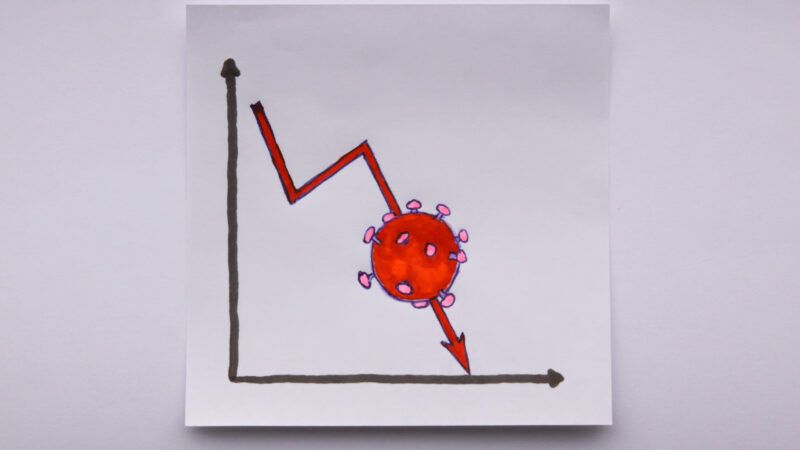The Best Forecast of COVID-19's Impact Suggests Post-Pandemic Normality Is in Sight for Americans
Daily U.S. COVID-19 deaths are approaching the influenza average.

Johns Hopkins University COVID-19 tracking data reports that, as of today, more than 600,000 Americans have died of coronavirus infections since the pandemic began here in February 2020. With infection and death rates in decline here in the U.S., it's worth revisiting which projections proved useful for anticipating the impact of the disease, and where we might be headed from here.
Back on March 30, 2020, the White House coronavirus task force estimated that U.S. COVID-19 deaths could be as high 100,000 to 240,000. By March 30, just over 4,000 Americans had succumbed to the virus. During his press briefing, former President Trump declared, "If we could hold that down, as we're saying, to 100,000, that's a horrible number, maybe even less, but to 100,000—so we have between 100- and 200,000—we altogether have done a very good job."
As it happens, it took until the end of May for the coronavirus death toll in the U.S. to reach 100,000 and until the beginning of November to rise beyond 240,000 deaths. The pandemic accelerated in December and January, doubling the number of COVID-19 deaths to 480,000 just after the beginning of February 2021. In contrast, the highest recent estimate for annual influenza deaths was 79,400 during the particularly bad 2017-2018 season.
Although he has suspended his efforts, data scientist Youyang Gu has one of the better, if not the best record, for tracking the trajectory of the COVID-19 pandemic in the U.S. For example, Gu projected back on May 1, 2020, that U.S. COVID-19 deaths would rise to around 170,00 by August 1; the actual number was about 160,000. Similarly, he projected 230,000 deaths by November 1; the actual number was around 239,000 on that date.
Gu later turned his attention to what he called the path to normality, that is, how the evolution of vaccination and infection rates would affect the course of the pandemic in 2021. His model projected in March 2021 that daily new (both detected and undetected) infections would have dropped to 16,000 on June 15, 2021. Keeping in mind that Gu assumes that only about half of COVID-19 cases will be detected, Johns Hopkins is reporting just over 11,000 cases for yesterday.
Gu also projected that 177 million Americans (53 percent) would have received at least one dose of a COVID-19 vaccine by June 15. The Centers for Disease Control and Prevention reports just under 175 million (52.6 percent) have received one dose and that nearly 146 million people are fully vaccinated.
Given Gu's track record, what do his projections suggest for how the pandemic will evolve over the coming months? New COVID-19 infections will decline and then plateau at about 4,000 per day in August and September before rising again as winter comes on. If Gu is correct, the daily rate of detected infections should fall to around 2,000 per day this summer.
So where are we on the path to normality? One way to think about that is to consider the number of daily deaths from COVID-19 that Americans are willing to accept. The annual deaths from one of our worst past flu seasons is perhaps a good benchmark. So taking the death toll of 79,400 Americans for the 2017-2018 season yields a daily death rate of 217 over the course of a year. (Calculating the toll over an 18-week flu season from mid-November to the end of March would yield a rate of around 630 per day.)
Since the pandemic began in March 2020, COVID-19 deaths in the U.S. have averaged nearly 1,300 per day. (The COVID-19 death rate during the winter surge from mid-November to the end of March averaged just under 2,500 per day.) According to Johns Hopkins' data, 339 Americans died of COVID-19 yesterday.
In other words, barring an outbreak of a new highly transmissible and vaccine-resistant COVID-19 virus variant, normality is well in sight if not already here.
Show Comments (53)